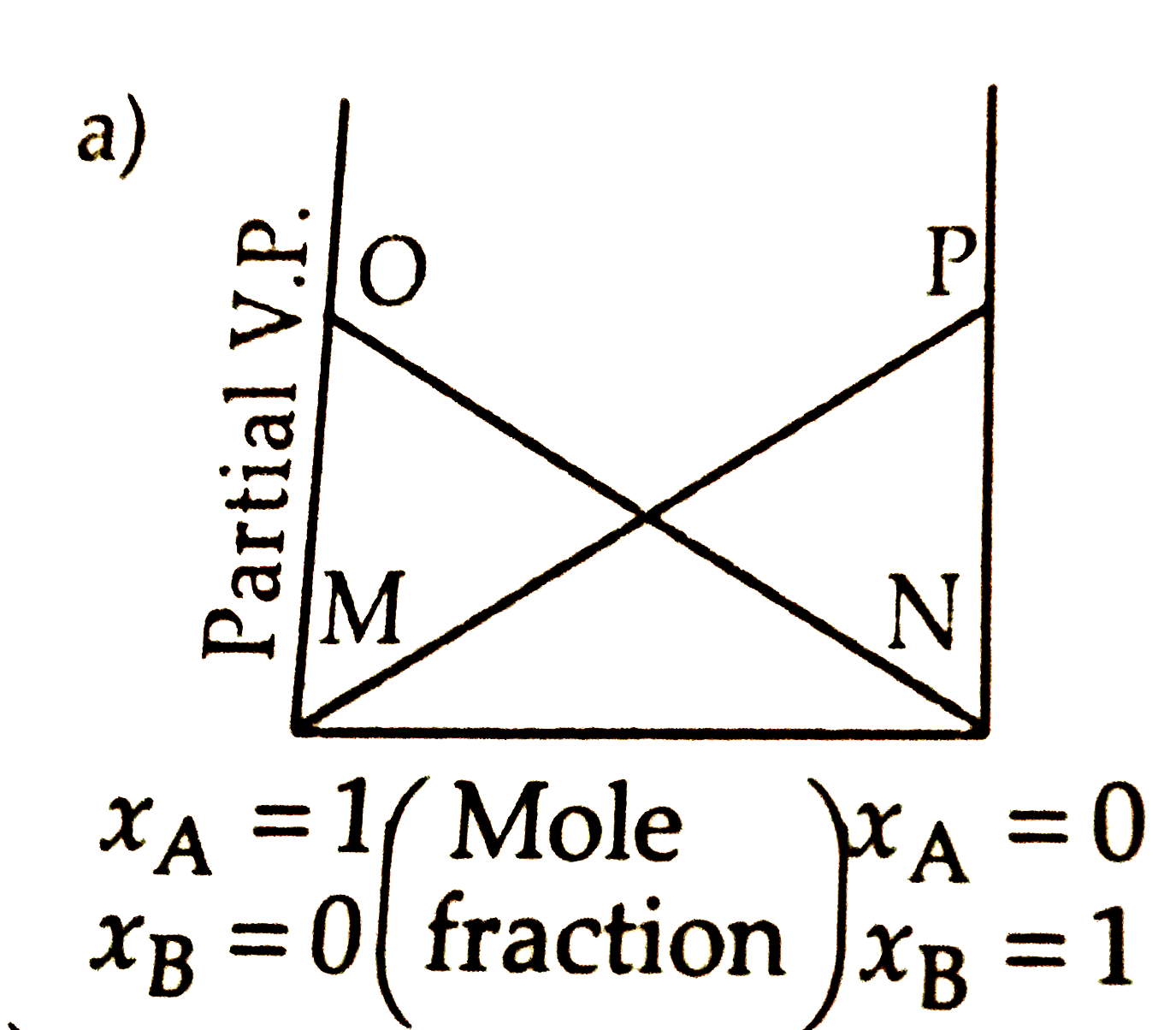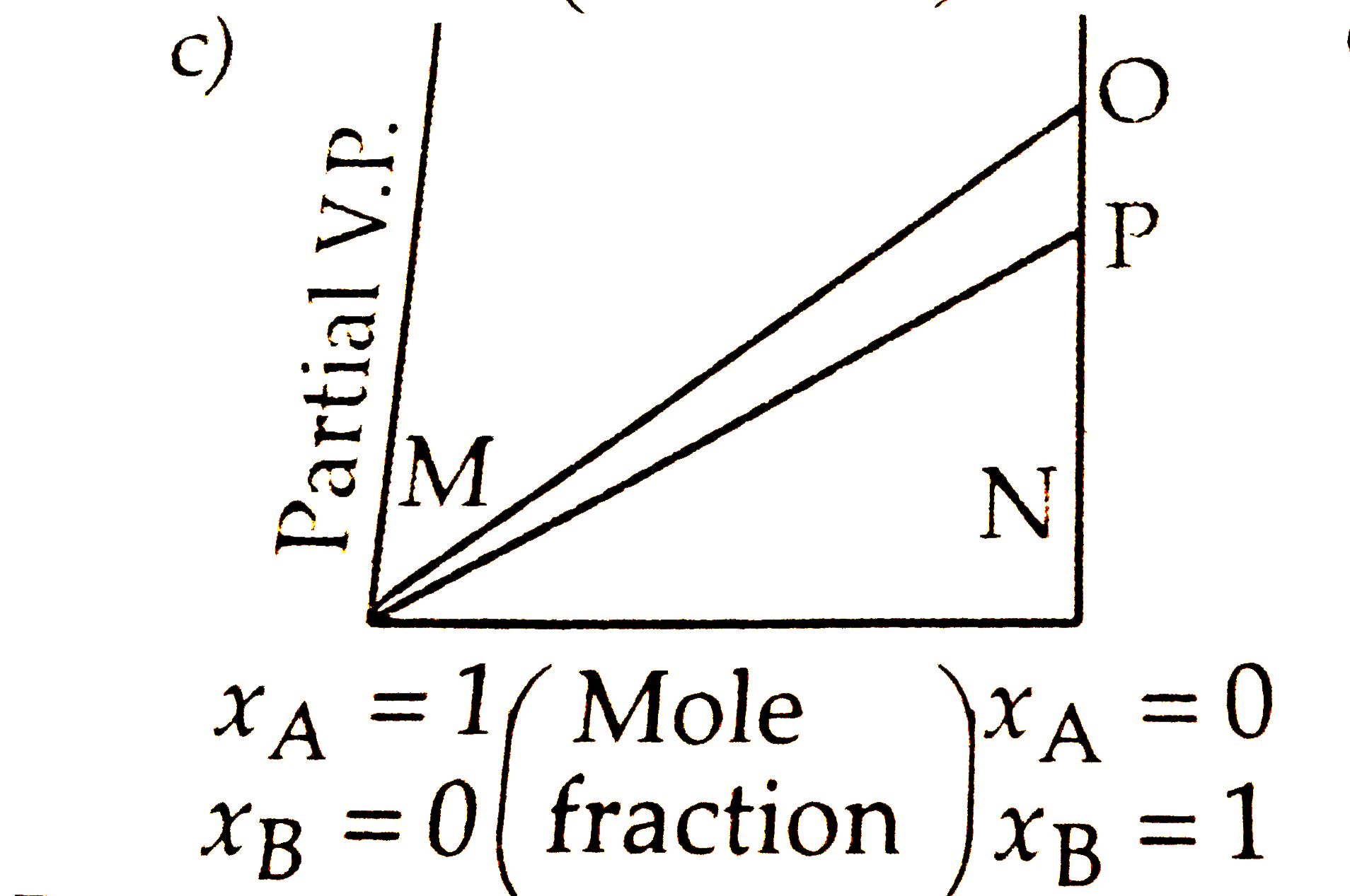For a solution of two liquids A and B it was proved that PS=xA(p∘a−p∘a+ P ^(@)B. The recsulting solution will be
Non-idcal
idcal
semi-ideal
None of these
The correct Answer is:B
ps=XA(p∘A−p∘B)+p∘B,
ps=P∘A×XA−p∘B×XA+p∘B
ps=p∘A×xA+p∘B(1−xn)+p∘a
∴ps=p∘A×xA+p∘B×xB.
This is condifion for ideal solution.
Topper's Solved these Questions
Similar Questions
Knowledge Check
An ideal solution has two components A and B. If A is more volatile than B and also P∘A>PT, then the correct relation between mole fraction of A in liquid (X) and vapour (Y) phase is :
AXA=YABXA>YACXA<YADNothing can be saidIn a solution of the miscible volatile liquids A and B, the plots of their partical V.P. Vs their mole fractions is given by (Assume, V.P. of pure Agt V.P. of pure B)
A B
B C
C D
D
For ideal binary solution,
p=xA⋅p0A+xB⋅p0B
This equation reflectsABoyle's lawBCharles' s lawCDalton's law of partial pressureDnone of these
Match the Column
Column-IColumn-II(A)Vapour pressure of binary solution of two miscible and volatile liquids when half of the liquid solution goes into vapour phase(p)P∘A−PP=χB(B)Vapour Pressure of two binary miscible and volatile liquids(q)P∘A+P∘B(C)Vapour pressure of binary solution of two immiscible and volatile liquids(r)(P∘A−P∘B)χA+P∘B(D)Vapour pressure of binary solution having non-volatile solute(s)√P∘AP∘B(t)Solution is ideal
View SolutionIf A and B are any two sets, prove that
P(A) = P(B) implies A = B.
View SolutionIf A and B are any two sets, prove that
P(A) = P(B) implies A = B.
View SolutionVapour pressure of a solvent is the pressure exterted by vapour when they are in equilibrium with its solvent at that temperature. The vapour pressure of solvent is dependent of nature of solvent, temperature, addition of non-volatile solute as well as nature of solute to dissociate or associate. The vapour pressure of a mixture obtained by mixing two valatile liquids is given by PM=P∘A.XA+P∘B.XB where P∘A and P∘B are vapour pressures of pure components A and B and XA,XB are their mole fractions in mixture. For solute-solvent system, the relatio becomes PM=P∘A.XA where B is non-volatile solute.
If M is mol.wt. of solvent, Kb is molal elevation constant and tb is its boiling point, P∘ is its vapour pressure ta temperature T and PS is vapour pressure of non-volatile solute in it at TK, then:
View SolutionVapour pressure of a solvent is the pressure exterted by vapour when they are in equilibrium with its solvent at that temperature. The vapour pressure of solvent is dependent of nature of solvent, temperature, addition of non-volatile solute as well as nature of solute to dissociate or associate. The vapour pressure of a mixture obtained by mixing two valatile liquids is given by PM=P∘A.XA+P∘B.XB where P∘A and P∘B are vapour pressures of pure components A and B and XA,XB are their mole fractions in mixture. For solute-solvent system, the relatio becomes PM=P∘A.XA where B is non-volatile solute.
A mixture of two volatile liquids A and B 1 and 3 moels respectively has a V.P of 300mm at 27∘C. IF one mole of A is further added to this solution, the vapour pressure becomes 290mm at 27∘C. The vapour pressure of A is:
View Solution
